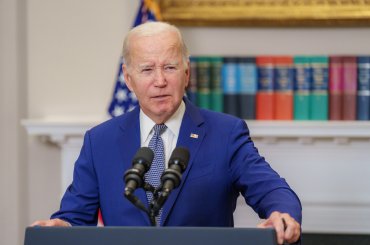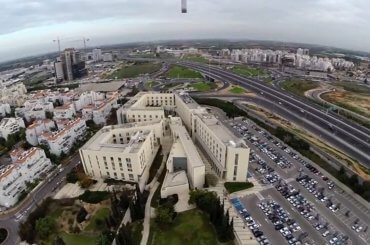It started with my morning scan of the selective English version of Haaretz, the Israeli liberal Zionist daily. With the start of the COVID-19 outbreak in New York (where we had been since Christmas) my wife and I had escaped to her original hometown of Honolulu. The geography works to my advantage in following the news from home: Upon arising in Hawaii I have the accumulated day’s news back in Israel at my fingertips to review before people back home in Israel and Palestine go to sleep.
The other morning one headline intrigued me and I delved in. The article started with seven photos of lead physicians in Israel’s major hospitals dealing with the COVID-19 pandemic. As I viewed the photos of my colleagues, I felt disappointed not to recognize any of them. At least a couple looked of about my age. But then my involvement with the Israeli public health system came to an end nearly three decades ago. I laid that to rest; after all, I was a midlevel health official and I didn’t necessarily know everyone in the system.
Another look and I started to feel perturbed: Only one of the seven was a woman, an obvious reflection of Israel’s gender discriminatory reality, especially as one reaches the upper echelons of the professional hierarchy.
I made a mental note of that and moved on to the next stage of my usual game: trying to see if anyone was a member of my community, the Palestinian Citizens of Israel.
I glanced at the photos again: four had indistinguishable Arab-like features that, under the circumstances, could be either Palestinian Arab or Sephardic Jewish. I delved further in my mental exercise of farasah, Arabic for ‘physiognomy’ (yes even if somewhat racist). The root of the Arabic term has something to do with the study of horses, peering in a horse’s face and predicting its behavior. Of course, Arabs had a special cultural relationship with horses, witness the worldwide intrigue with Arabian horses. And the Koran and the Prophet spoke repeatedly of horses.
None of that helped: My farasah was rather limited [unlike my grandfather who was a known swordsman and a horseman in the late Ottoman era].
I changed tactics. I usually can tell members of my wider community of Palestinian citizens of Israel by their names. In Israel, the combination of first and last names leaves little doubt about the communal belonging, Arab versus Jewish, of an Israeli person. Given the residential near-full separation between Arabs and Jews in Israel, a reality reflecting the Jewish-only access to government housing projects, racial identity becomes nearly synonymous with communal belonging. This becomes quite significant when we speak of the spread of coronavirus and the interphase of health workers and community residents, etc. Be that as it may, none of the score of the names of physicians and officials in the article was that of a Palestinian.
Mind you, in the health care field in Israel, my community plays a distinctive role, at least numerically. We supply the system with 17% of its physicians, 24% of its nurses and 47% of its pharmacists. Lee Yaron, one of Haaretz’ contributors, sums up her opinion on the matter with the statement: “They account for 17 percent of the country’s doctors and save Jewish lives 24/7. But when it comes to representation in government, even in the times of the coronavirus, Netanyahu thinks they are a danger.”
And we haven’t mentioned the ubiquitous Arab doormen, gardeners, cleaning women, cooks, drivers and the like. We must note here that such over-representation is unique to the health sector, an exceptional one which is given to a high degree of altruism and dedication to one’s charges, the patients, regardless of race, gender or religion. In fact, Israeli officials often brag about the health sector’s egalitarian principles and its inclusivity of “Israel’s Arabs.”
But Professor Reem Khamis-Dakwar decries the institutionally ingrained structural discrimination against our community of Palestinian citizens of Israel:
“In fact, health care in Israel has been described as a ‘model of genuine commonality between Arabs and Jews’. Yet, there is not a single governmental hospital in any of Israel’s Arab cities or towns. Additionally, the Arab communities residing in Israel have relatively very little access to COVID-19 test kits or any reliable information about the spread of the virus. A governmental plan to build drive-in testing stations provided resources for seven Jewish cities but not one Arab community. Only one clinic in an Arab city has been designated as a primary corona clinic, compared to the 45 in Jewish cities. Furthermore, public information about the pandemic has almost entirely been disseminated in Hebrew. Arab Knesset members are scrambling to advocate for the development of health information in Arabic and increased testing in Arab communities as well as developing an economic support plan. So much for a model of equality.”
The physicians whose photos were paraded across the pages of Haaretz in the former article repeatedly used such military jargon as ‘war, front, collateral damage, change of command,’ etc. etc. One even borrowed from Saddam Hussein’s name for his war: We are ‘the mother of all’ peripheries, he said. Normally, we Palestinian citizens of Israel do not serve in Israel’s armed forces. That may well explain the contradictions cited above regarding our physicians’ placement within the system.
One wonders how long would such a cadre serve without taking offense at the neglect its community experiences. Still, I continue to hope against hope that professional aptitude considerations will soon overcome institutional racism and forestall any possible rumblings.
***
Half a century ago, and with reference to such scourges as syphilis, tuberculosis and leprosy, and to the more persistent affliction of cancer, Susan Sontag illuminated the link between disease virulence and the stigma society assigns to the unfortunate classes that suffer it the most. There is little that has changed since in such commonly cruel and usually racist blaming of the victims and discriminatory practices whether in health or in other spheres, especially in socioeconomic, class and associated regional features. Arundhati Roy’s piercing analysis of current trends in India spells out the creeping violent trends associated with rising victorious nationalism. “The mandarins who are managing this pandemic are fond of speaking of war. They don’t even use war as a metaphor, they use it literally.” Furthermore, fear of COVID-19 accentuates the existing religious strife and violent Islamophobia that spill over into accusations of coronavirus subterfuge. Arundhati Roy adds:
“The overall tone suggests that Muslims invented the virus and have deliberately spread it as a form of jihad. The Covid crisis is still to come. Or not. We don’t know. If and when it does, we can be sure it will be dealt with, with all the prevailing prejudices of religion, caste and class completely in place.”
Yet, the world-class literary icon and socio-political analyst ends on a note that leaves space for optimism: “Historically, pandemics have forced humans to break with the past and imagine their world anew. This one is no different. It is a portal, a gateway between one world and the next.”
It is on this faint light at the end of the tunnel that I choose to hang my hopes: The flashy two-state solution for Israelis and Palestinians has proven to be a mirage. It has faded away, if it ever existed in the first place. Both parties are here to stay AND to stay together. Neither party, whether armed with stones or nuclear bombs, is at liberty to ethnically cleanse or genocide the other out of existence.
But COVID-19 has acted as an equalizer: Israel’s involvement of the IDF, the security police and the Mossad in the fight against the pandemic with such bizarre phenomena (bizarre to Israelis, not to Palestinians) as checkpoints in the streets of Tel-Aviv and surveillance of people’s movements have normalized the tactics of occupation in Jewish Israel.
What is needed is a tidal wave in the opposite direction: to extend what democratic norms are taken for granted among Jewish Israelis to the rest of historical Palestine from the Jordan River. to the Mediterranean Sea. The reconciled Palestinians like me, who accept the need to build a future with Jewish Israelis, are chomping at their professional bit in rejecting their current Jewish Israeli masters’ conception of them as “hewers of wood and carriers of water.” Other reconciled Palestinians like Omar Barghouti, albeit at a different level of civic inclusion, have flung the glove of peaceful coexistence in a single democratic and secular state west of the Jordan River in the arena.
Does some straight-thinking, enlightened and humane Israeli with valor and sufficient public stature for the job dare pick it up before the next zoonosis strikes?



“Both parties are here to stay AND to stay together. Neither party, whether armed with stones or nuclear bombs, is at liberty to ethnically cleanse or genocide the other out of existence.”
Admirable optimism, Dr. Kanaaneh. One may and in fact should always hope but a quick look at history shows the opposite of the first sentence. It just doesn’t happen — you and I will remember that we heard it repeated daily during the Algerian war of liberation… As for the second sentence, better prepare than hope.
Kanaane’s complaint is unclear. Is it that Arabs are involved in the medical system in Israel above their relative portion among Israeli civilians? Or is that Israeli police sent policemen to monitor the civilian closure policy in Tel Aviv? By the way, Arab doctors in Israel are 20% of all doctors, more than their share among citizens.
Israel has eased people’s movement restrictions because the epidemic shows a steady decline in the number of people infected and dead and an increase in the number of patients who have recovered.
In Arab communities, test centers were placed, according to the extent of morbidity, according to the same key as used in the Jewish and mixed localities. There are few test centers in 3 main hospitals, one in central park between Tel Aviv and Ramat Gan, and 10 mobile centers [for the moment. Their number is growing] that are moving among towns, by the health ministry need definition [which are occupied regularly with Arab doctors too]. Today, there are 3 test centers in the Arab villages in the Galilee and one in Bedouin Rahat city, in the Northern Negev.
Moreover, it is appropriate to separate the involvement of Israeli Arabs in the health, education and economic matters, from the politics and military questions, as long as the conflict between their state and their ethnic-religious community is not being resolved.